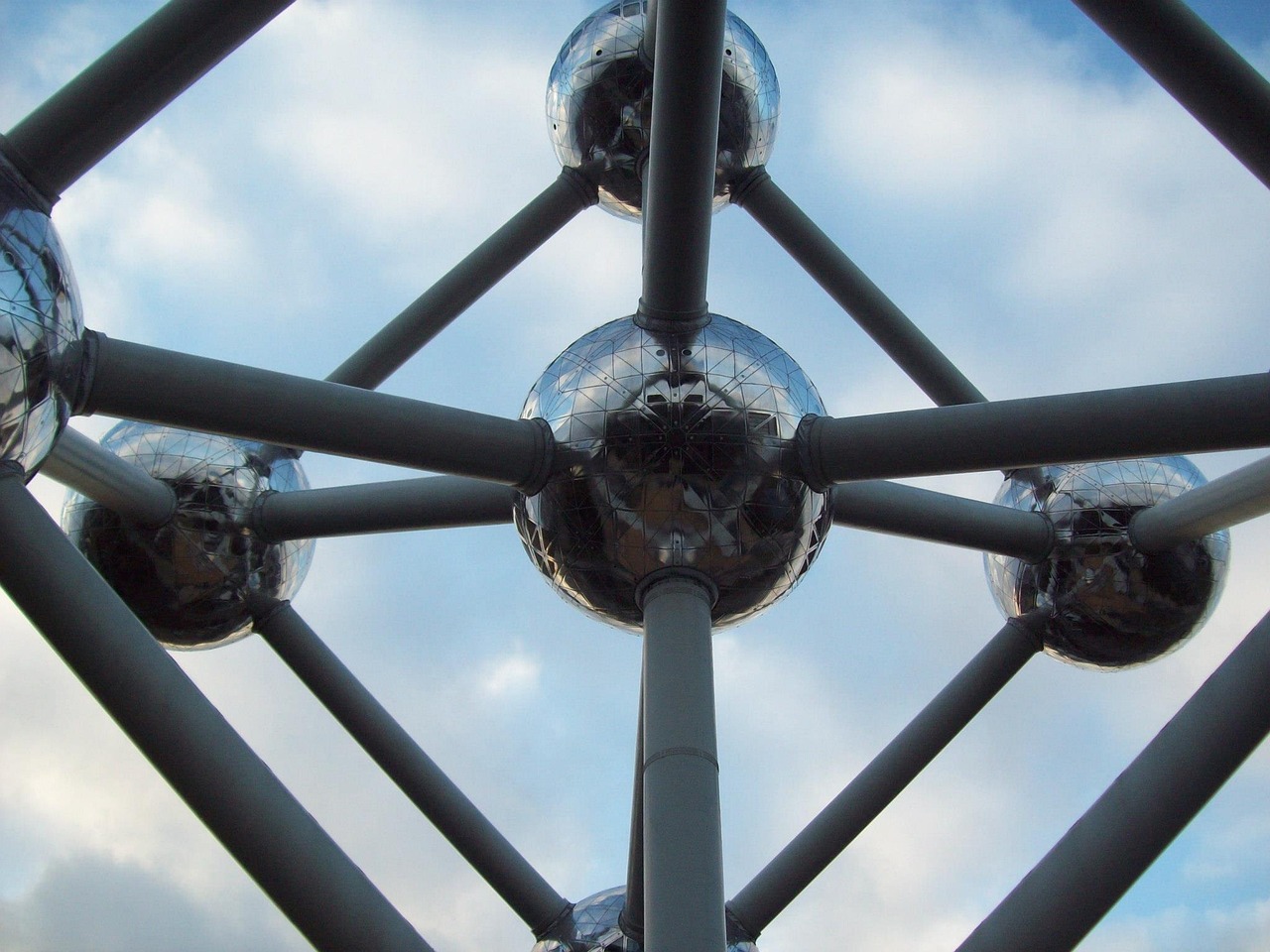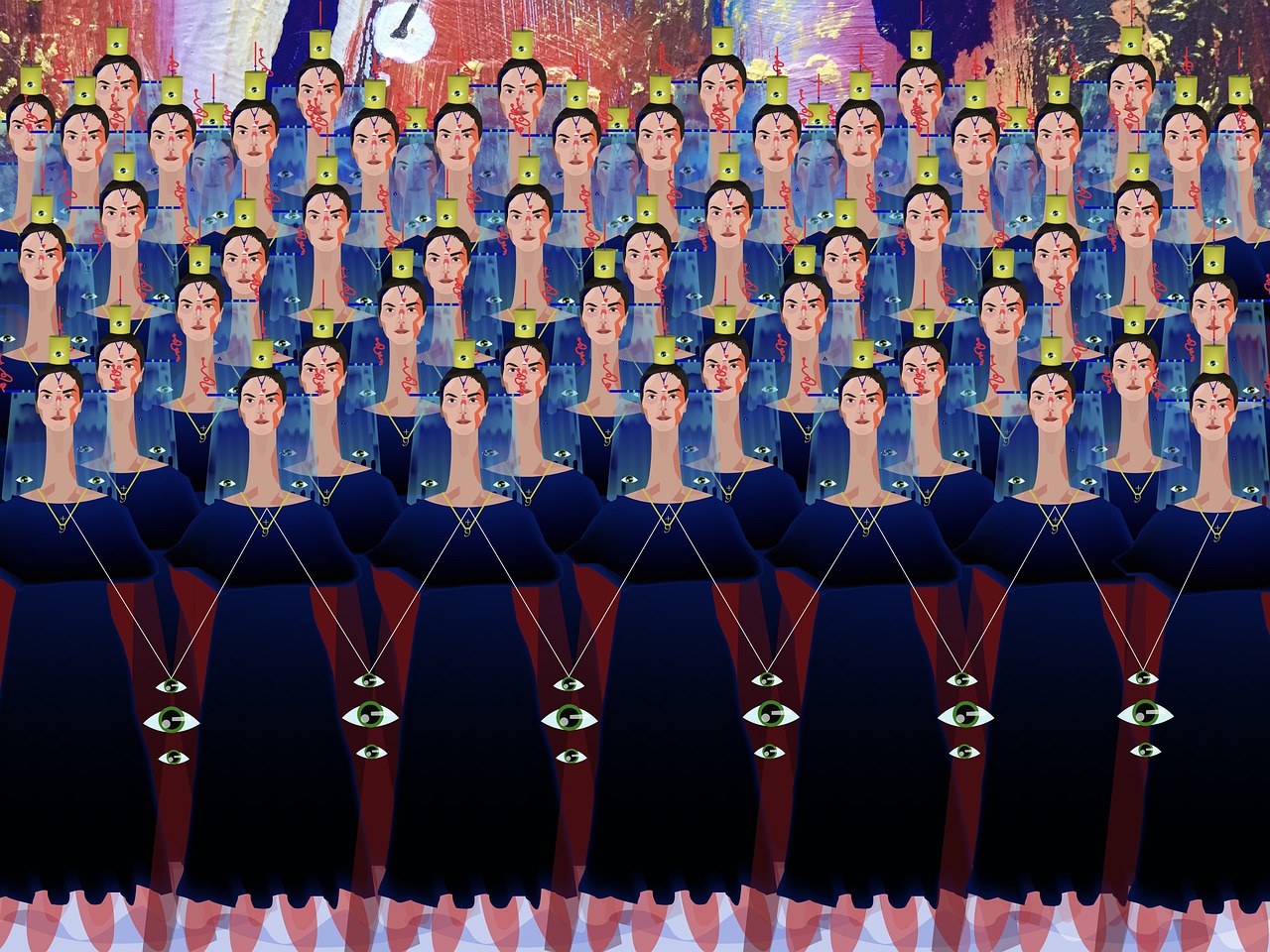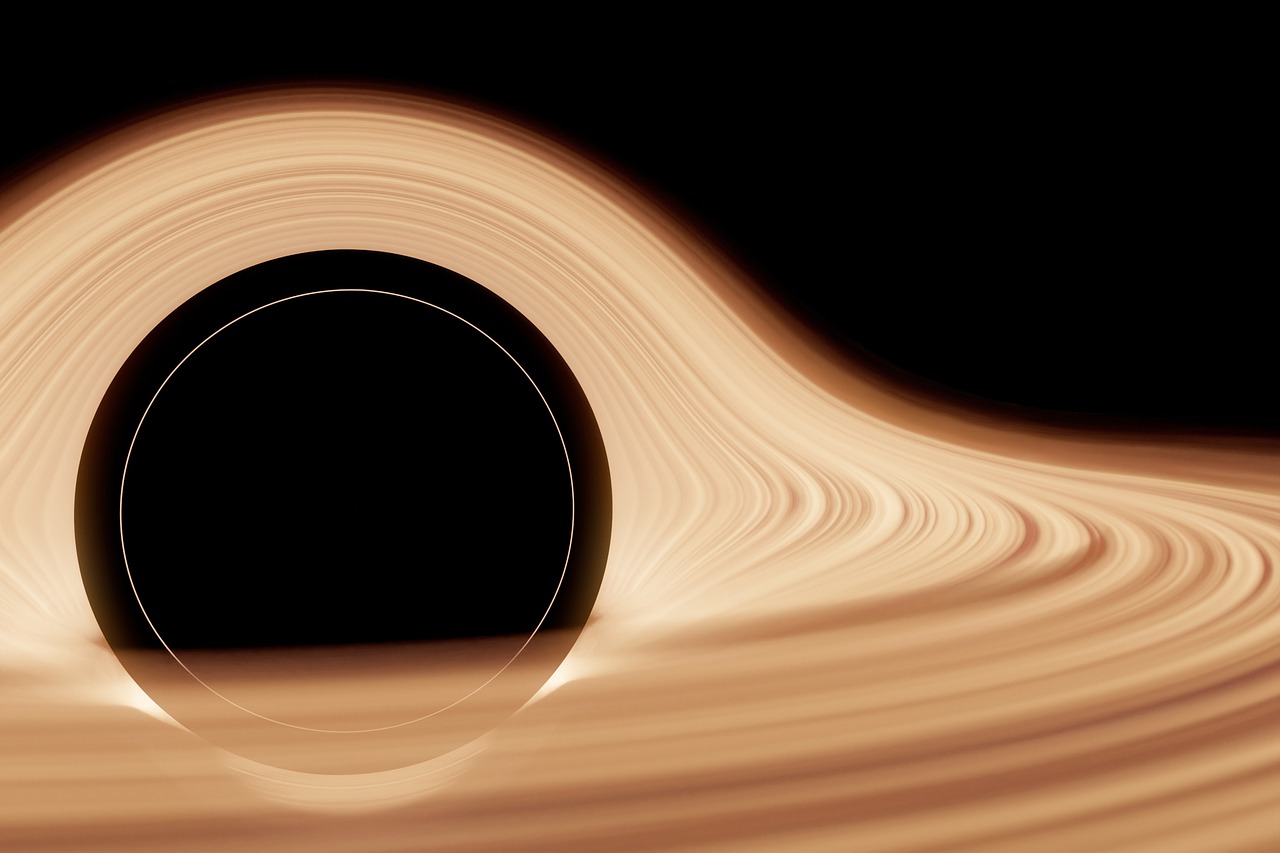The Philosophy of Quantum Superposition
Have you ever pondered the nature of reality? What if I told you that at the most fundamental level, the universe behaves in ways that challenge our everyday understanding? Welcome to the fascinating realm of quantum superposition. This concept, which lies at the heart of quantum mechanics, suggests that particles can exist in multiple states at once, rather than being confined to a single state. Imagine flipping a coin: while it’s in the air, it’s not just heads or tails—it’s a superposition of both until it lands. This idea not only revolutionizes physics but also raises profound philosophical questions about existence, perception, and the very fabric of reality.
As we delve deeper into quantum superposition, we’ll explore how this principle reshapes our understanding of the universe. It prompts us to ask: What does it mean for something to exist? Are we merely observers in a universe that exists independently of our perception, or does our observation play a crucial role in defining reality? The implications are staggering. They ripple through various fields, from physics to philosophy, and even into the realms of technology and computing.
In essence, quantum superposition invites us to reconsider the deterministic view of the universe. It challenges the notion that the universe operates in a predictable, linear fashion and instead suggests a more intricate tapestry of possibilities. As we embark on this journey through the principles and implications of quantum superposition, we will uncover not only the scientific underpinnings but also the philosophical inquiries that arise from this mind-bending concept.
So, buckle up! We’re about to explore the depths of quantum theory, historical milestones, and the philosophical ramifications that come with understanding that reality might not be as cut-and-dry as we once thought. Are you ready to challenge your perceptions and dive into the quantum realm?
- What is quantum superposition? Quantum superposition is a fundamental principle of quantum mechanics that describes a particle's ability to exist in multiple states at the same time until it is observed.
- How does quantum superposition affect our understanding of reality? It challenges the classical view of reality by suggesting that outcomes are not determined until they are measured, leading to philosophical debates about existence and observation.
- What are some practical applications of quantum superposition? One of the most significant applications is in quantum computing, where superposition allows for faster processing of information through quantum bits (qubits).
- Are there alternative theories to quantum superposition? Yes, theories such as hidden variables and the many-worlds interpretation provide different perspectives on quantum phenomena.

The Basics of Quantum Superposition
Quantum superposition is one of the most fascinating concepts in modern physics, and it challenges our intuitive understanding of reality. At its core, quantum superposition refers to the ability of a quantum system, such as an electron or a photon, to exist in multiple states simultaneously. Imagine tossing a coin; while it is in the air, it can be thought of as both heads and tails at the same time. This is similar to how particles behave at the quantum level, where they can occupy different states until measured. This concept is not just a quirky feature of the quantum world; it fundamentally alters how we perceive existence and reality itself.
The implications of quantum superposition extend far beyond mere theoretical musings. They force us to reconsider our understanding of determinism and probability. In classical physics, we are accustomed to the idea that objects have definite states. For example, a ball is either in motion or at rest, but in the quantum world, particles can be in a state of flux. This leads to the famous principle of uncertainty, which suggests that we cannot know both the position and momentum of a particle with absolute precision. Instead, we can only describe probabilities of where a particle might be found.
To put it simply, quantum superposition allows for a multitude of possibilities to coexist until an observation is made. This phenomenon is often illustrated using the thought experiment known as Schrödinger's cat, where a cat in a sealed box is simultaneously alive and dead until someone opens the box to check. This paradox highlights not only the strange nature of quantum mechanics but also raises profound questions about the act of observation itself.
One might wonder why this matters in our everyday lives. Understanding quantum superposition is crucial for advancements in technology, particularly in fields like quantum computing. Here, superposition enables quantum bits (qubits) to exist in multiple states at once, vastly increasing computational power compared to classical bits, which can only be in one state at a time (either 0 or 1).
In summary, quantum superposition is not just a scientific curiosity; it reshapes our understanding of reality and existence. As we delve deeper into this topic, we will uncover its historical context, philosophical implications, and practical applications that could revolutionize technology as we know it.

Historical Context
The journey into the realm of quantum superposition is not just a scientific expedition; it is a fascinating story that intertwines the lives of brilliant minds and groundbreaking experiments. The concept of superposition arose from the early 20th century, a time when the classical mechanics that had dominated physics began to show cracks under scrutiny. Pioneers like Max Planck and Albert Einstein laid the groundwork for quantum theory, but it was the work of others that truly illuminated the enigmatic nature of particles existing in multiple states simultaneously.
One of the most significant turning points in this journey was the introduction of the quantum wave function by physicist Erwin Schrödinger in 1926. Schrödinger's equation provided a mathematical framework for understanding how particles could exist in a superposition of states. Imagine a spinning coin; while it's spinning, it can be thought of as both heads and tails at the same time. This analogy captures the essence of superposition, where particles like electrons can inhabit multiple states until they are measured.
As we delve deeper into the historical context, it’s essential to highlight some pivotal experiments that shaped our understanding of quantum superposition. The double-slit experiment, conducted by Thomas Young in the early 1800s, is a prime example. Although it predates quantum mechanics, it set the stage for later discoveries. In this experiment, light was shone through two slits, creating an interference pattern on a screen behind the slits, suggesting that light behaves as a wave. However, when particles like electrons were sent through the same setup, they also produced an interference pattern, indicating that they too exhibit wave-like behavior when not observed. This phenomenon challenged classical interpretations and hinted at the underlying reality of superposition.
In the decades that followed, the contributions of physicists such as Niels Bohr and Werner Heisenberg further enriched the discourse surrounding quantum mechanics. Bohr's principle of complementarity suggested that particles could exhibit both wave-like and particle-like properties, depending on the experimental setup. Meanwhile, Heisenberg's uncertainty principle introduced the idea that the act of measurement affects the state of a particle, leading to profound philosophical implications regarding reality and our perception of it.
To summarize the historical context of quantum superposition, we can look at the following key figures and their contributions:
| Physicist | Contribution |
|---|---|
| Max Planck | Introduced the concept of quantization of energy. |
| Albert Einstein | Explained the photoelectric effect, supporting the particle theory of light. |
| Erwin Schrödinger | Developed the wave function and Schrödinger's equation. |
| Niels Bohr | Proposed the principle of complementarity. |
| Werner Heisenberg | Formulated the uncertainty principle. |
These early explorations into the quantum realm not only reshaped physics but also raised profound questions about the nature of reality itself. As we ponder the implications of quantum superposition, we begin to realize that the answers we seek may not be as straightforward as we once thought. Instead, they challenge our very understanding of existence, prompting us to reconsider the fabric of reality and our place within it.
- What is quantum superposition? Quantum superposition is the principle that a quantum system can exist in multiple states at once until it is measured.
- How does the double-slit experiment demonstrate superposition? The double-slit experiment shows that particles can behave like waves, creating interference patterns when not observed, indicating they exist in a superposition of states.
- What are the philosophical implications of quantum superposition? It challenges our understanding of reality, determinism, and the nature of existence, suggesting that multiple outcomes can coexist.
- How is quantum superposition applied in technology? Quantum superposition is harnessed in quantum computing, allowing for faster problem-solving capabilities through quantum algorithms.

Key Experiments
When we dive into the realm of quantum superposition, we can't overlook the groundbreaking experiments that have shaped our understanding of this mind-boggling concept. One of the most famous is the double-slit experiment, which serves as a cornerstone in quantum mechanics. Imagine this: you have a barrier with two slits, and you fire particles, like electrons, at it. If you observe which slit each particle goes through, they behave like little balls, creating two distinct patterns on a screen behind the barrier. But here's where it gets wild—when you don't observe them, they act like waves, creating an interference pattern that suggests they passed through both slits simultaneously. This phenomenon is a direct manifestation of quantum superposition, challenging our classical intuition about how particles should behave.
Another pivotal experiment is the quantum entanglement test, famously illustrated by the thought experiment known as Einstein-Podolsky-Rosen (EPR) paradox. In this scenario, two particles are entangled, meaning the state of one instantly influences the state of the other, no matter how far apart they are. This instantaneous connection hints at a deeper level of reality where particles exist in a superposition of states until measured. It raises questions about locality and the nature of reality itself—are these particles communicating faster than light, or is our understanding of space and time incomplete?
To add another layer to our exploration, we can look at the Bell's theorem experiments. These experiments test the predictions of quantum mechanics against local hidden variable theories. By measuring entangled particles, researchers have consistently found results that align with quantum mechanics, suggesting that the particles exist in a superposition of states until measured, thereby reinforcing the idea that reality is not as straightforward as it seems. The implications of these experiments are profound, as they challenge the very fabric of our understanding of causality and the deterministic view of the universe.
In summary, these key experiments not only illustrate the fascinating nature of quantum superposition but also provoke deeper philosophical questions about reality and existence. They force us to reconsider our intuitive notions of how the universe operates. As we continue to unravel the mysteries of quantum mechanics, we become more aware of the intricate dance between observation and reality—a dance that lies at the very heart of quantum superposition.
- What is quantum superposition? Quantum superposition is the principle that a quantum system can exist in multiple states or configurations simultaneously until it is measured or observed.
- Why is the double-slit experiment important? The double-slit experiment demonstrates the fundamental principles of quantum mechanics, particularly the wave-particle duality and the phenomenon of superposition.
- What does entanglement mean in quantum mechanics? Entanglement refers to a quantum phenomenon where two or more particles become linked, such that the state of one particle instantly influences the state of another, regardless of the distance separating them.
- How do Bell's theorem experiments contribute to our understanding of quantum mechanics? Bell's theorem experiments provide evidence against local hidden variable theories, supporting the predictions of quantum mechanics and reinforcing the idea of superposition.

Wave-Particle Duality
Wave-particle duality is one of the most fascinating and perplexing concepts in quantum mechanics, and it serves as a cornerstone in our understanding of the quantum realm. At its core, this principle suggests that every particle or quantum entity can be described as both a particle and a wave. This duality challenges our classical intuitions about the nature of matter and energy. Imagine a coin spinning in the air; while it's in motion, it doesn't settle into heads or tails but exists in a state that embodies both possibilities. Similarly, particles like electrons and photons exhibit behaviors that can be interpreted through both wave and particle models depending on the experimental setup.
The implications of wave-particle duality are profound, as they suggest that the very fabric of reality is inherently ambiguous. For instance, light can behave like a wave, demonstrating interference patterns, yet it can also be detected as discrete packets of energy called photons when interacting with matter. This dual behavior raises a critical question: Is light fundamentally a wave, a particle, or something entirely different? This is where quantum superposition comes into play, allowing particles to exist in multiple states simultaneously until they are observed or measured.
To illustrate this concept further, let's consider the famous double-slit experiment. When light or particles are fired at a barrier with two slits, they create an interference pattern on a screen behind the barrier, suggesting that they are behaving like waves. However, if we observe which slit the particle goes through, the interference pattern disappears, and particles behave like discrete entities. This paradox not only highlights wave-particle duality but also emphasizes the role of the observer in quantum mechanics.
In the context of wave-particle duality, it's essential to recognize how this concept intertwines with quantum superposition. When particles are not being observed, they can exist in a superposition of states, embodying both wave-like and particle-like properties. This duality is not just a theoretical abstraction; it has real-world implications in technology and philosophy. For instance, understanding this duality is crucial for the development of quantum technologies, including quantum computers, which leverage these principles to perform calculations at unprecedented speeds.
In summary, wave-particle duality forces us to reconsider our classical views of reality. It suggests that the universe is not as straightforward as it seems, and that our observations can fundamentally alter the state of what we are observing. As we delve deeper into the mysteries of quantum mechanics, the implications of wave-particle duality will continue to challenge our perceptions of existence and reality itself.

Measurement Problem
The in quantum mechanics is a fascinating and perplexing issue that arises when we try to understand how the act of measurement affects quantum systems. Imagine you’re at a magic show, and the magician pulls a rabbit out of a hat. Before the reveal, the rabbit could be anywhere—it's a mystery! Similarly, in quantum mechanics, particles exist in a state of superposition, where they can be in multiple states at once, much like that elusive rabbit. However, once we observe or measure these particles, they seem to "choose" a state, collapsing into a specific outcome. This transition from potentiality to reality raises profound questions about the nature of existence itself.
To illustrate this, consider the famous thought experiment known as **Schrödinger's cat**. In this scenario, a cat is placed in a sealed box with a radioactive atom that has a 50% chance of decaying. If it decays, it triggers a mechanism that kills the cat; if it doesn't, the cat lives. Until we open the box to observe, the cat is considered to be both alive and dead at the same time, existing in a superposition of states. This paradox highlights the crux of the measurement problem: how does the act of observation influence the state of a quantum system? Are we merely spectators in a cosmic play, or do we actively shape the reality we perceive?
The implications of the measurement problem extend beyond physics, delving into the realms of philosophy and metaphysics. It challenges our understanding of **determinism** and the nature of reality itself. If particles can exist in multiple states until measured, does that mean reality is inherently probabilistic? Or is there an underlying reality that we simply cannot perceive? These questions lead to various interpretations of quantum mechanics, each attempting to reconcile the peculiarities of superposition with our everyday experiences.
Moreover, the measurement problem has prompted scientists and philosophers alike to explore alternative theories that seek to explain this phenomenon. For instance, some propose that there are hidden variables—unknown factors that determine the outcomes of measurements, while others suggest that all possible outcomes exist in parallel universes, a notion famously encapsulated in the **many-worlds interpretation**. Each of these perspectives offers a unique lens through which to view the quantum world, yet none have reached a consensus, leaving the measurement problem shrouded in mystery.
In summary, the measurement problem is not just a technical challenge within quantum mechanics; it is a profound philosophical inquiry into the nature of reality, consciousness, and existence. As we continue to explore the quantum realm, we may find that the answers to these questions reshape our understanding of the universe and our place within it.
- What is the measurement problem in quantum mechanics?
The measurement problem refers to the difficulty in understanding how the act of measurement affects a quantum system, particularly how it causes superposition to collapse into a single state.
- How does Schrödinger's cat illustrate the measurement problem?
Schrödinger's cat is a thought experiment that demonstrates how a quantum system can exist in multiple states (alive and dead) until it is observed, highlighting the paradox of superposition.
- What are some interpretations of the measurement problem?
There are several interpretations, including the many-worlds interpretation, which suggests that all possible outcomes exist in separate universes, and hidden variables theories, which propose unknown factors influencing outcomes.

Philosophical Implications
The concept of quantum superposition doesn’t just rattle the cage of physics; it shakes the very foundations of our philosophical understanding of reality and existence. Imagine a world where a cat can be both alive and dead at the same time—this isn’t just a whimsical thought experiment; it’s a reflection of the implications of superposition as illustrated by Schrödinger's famous cat paradox. This paradox forces us to confront the uncomfortable notion that reality may not be as straightforward as we once believed. Are we merely observers in a universe that exists independently of our perception, or does our observation play a crucial role in shaping that reality?
One of the most profound questions arising from quantum superposition is that of determinism. In classical physics, events are predictable, and outcomes can be determined based on initial conditions. However, the inherent uncertainty of quantum mechanics, highlighted by superposition, leads us to ponder whether our universe is deterministic or fundamentally probabilistic. If particles can exist in multiple states until measured, does that mean our future is also a superposition of possibilities, waiting for us to collapse it into one reality through our choices?
In addition, the implications of quantum superposition challenge the very nature of existence itself. If particles can be in multiple states simultaneously, what does that say about the nature of objects and their properties? Are properties like position and momentum merely illusions, dependent on our measurement? This leads to a deeper philosophical inquiry into the nature of reality. Are we living in a world where existence is a mere tapestry woven from probabilities, or is there a more concrete reality that we have yet to comprehend?
Furthermore, the concept of superposition raises intriguing questions about consciousness and observation. The act of observing a quantum state seems to influence its outcome, leading to the famous observer effect. Does consciousness play a fundamental role in the fabric of reality? Some philosophers argue that our awareness may participate in the unfolding of the universe, while others suggest that this idea is an overreach of our understanding. The debate continues, as we struggle to reconcile the mysterious dance of quantum mechanics with our everyday experiences.
To illustrate these philosophical implications, consider the following table that summarizes key questions raised by quantum superposition:
| Question | Implication |
|---|---|
| Is reality deterministic? | Challenges our understanding of cause and effect. |
| What is the nature of existence? | Questions the solidity of objects and their properties. |
| Does observation affect reality? | Proposes a unique role for consciousness in shaping outcomes. |
In conclusion, the philosophical implications of quantum superposition invite us to rethink our understanding of reality, existence, and the role of consciousness. As we delve deeper into the quantum realm, we may find that the questions are just as important as the answers, challenging us to expand our minds and embrace the complexities of the universe.
- What is quantum superposition? Quantum superposition is a fundamental principle of quantum mechanics where a particle can exist in multiple states at the same time until it is observed or measured.
- How does quantum superposition relate to reality? It challenges our classical understanding of reality by suggesting that outcomes are not determined until a measurement is made, raising questions about the nature of existence.
- What is the measurement problem? The measurement problem refers to the dilemma of how and why quantum states collapse into a single outcome upon observation, affecting our understanding of reality.

Applications in Quantum Computing
Quantum superposition isn’t just a mind-bending concept confined to the realms of theoretical physics; it’s also the backbone of a technological revolution known as quantum computing. Imagine a computer that can perform calculations at lightning speed, solving problems that would take classical computers thousands of years to crack. This is the promise of quantum computing, and at its core lies the principle of superposition, allowing quantum bits, or qubits, to exist in multiple states simultaneously.
To understand how this works, let’s consider a classical bit, which can either be a 0 or a 1. In contrast, a qubit can be both 0 and 1 at the same time, thanks to superposition. This unique property enables quantum computers to process a vast amount of information simultaneously. For instance, if you have just two qubits, they can represent four possible states at once (00, 01, 10, and 11). As you increase the number of qubits, the computational power grows exponentially. A quantum computer with just 20 qubits can represent over a million different states at once!
The applications of quantum computing are diverse and groundbreaking. Here are some key areas where quantum superposition is making waves:
- Cryptography: Quantum computers can potentially break traditional encryption methods, leading to the development of quantum-safe cryptography.
- Drug Discovery: By simulating molecular interactions at a quantum level, researchers can accelerate the discovery of new drugs and materials.
- Optimization Problems: Quantum algorithms can tackle complex optimization problems in logistics, finance, and manufacturing, yielding solutions that classical computers would struggle to find.
One of the most exciting aspects of quantum computing is the development of quantum algorithms that leverage superposition to enhance computational efficiency. For example, Shor's algorithm allows for the factorization of large numbers exponentially faster than the best-known classical algorithms. This capability could revolutionize fields like cryptography, where the security of data relies heavily on the difficulty of factoring large integers.
Another notable algorithm is Grover's algorithm, which can search unsorted databases quadratically faster than classical counterparts. This means that if you have a database of a million entries, Grover's algorithm could find the desired entry in about 1,000 operations, compared to a million operations with classical search methods. This efficiency opens doors to innovations in data retrieval and artificial intelligence.
As we look to the future, the potential advancements driven by quantum superposition in technology are staggering. Researchers are exploring applications in various fields, including:
| Field | Potential Applications |
|---|---|
| Finance | Risk analysis, portfolio optimization, and fraud detection. |
| Logistics | Supply chain optimization and route planning. |
| Artificial Intelligence | Enhanced machine learning models and faster data processing. |
In conclusion, the applications of quantum superposition in quantum computing are not just theoretical; they are paving the way for real-world innovations that could reshape industries and improve our daily lives. As researchers continue to unlock the secrets of quantum mechanics, we stand on the brink of a technological revolution that promises to redefine our understanding of computation and information processing.
- What is quantum superposition? Quantum superposition is the principle that a quantum system can exist in multiple states at the same time until it is measured.
- How does quantum computing differ from classical computing? Quantum computing utilizes qubits that can represent multiple states simultaneously, allowing for parallel processing, while classical computing relies on bits that are either 0 or 1.
- What are some practical applications of quantum computing? Quantum computing has potential applications in cryptography, drug discovery, optimization problems, and artificial intelligence.

Quantum Algorithms
Quantum algorithms represent a fascinating leap into the future of computation, harnessing the peculiar properties of quantum mechanics to solve problems that would otherwise take classical computers eons to crack. Imagine a world where complex calculations that once took days or even years can now be completed in mere seconds. This isn't science fiction; it's the promise of quantum computing driven by the principles of quantum superposition.
At the heart of quantum algorithms is the ability to process vast amounts of data simultaneously. In classical computing, bits are the fundamental units of information, existing as either 0 or 1. In contrast, quantum computers use qubits, which can exist in multiple states at once due to superposition. This means that a quantum computer can evaluate multiple possibilities at the same time, making it exponentially more powerful for certain tasks. For instance, consider the famous Shor's algorithm, which can factor large numbers efficiently. This has profound implications for cryptography, as many encryption methods rely on the difficulty of factorization.
Another notable quantum algorithm is Grover's algorithm, which provides a quadratic speedup for unstructured search problems. If you've ever searched for a needle in a haystack, you know how tedious it can be. Grover's algorithm helps find that needle much faster by leveraging quantum superposition to explore multiple paths simultaneously. This capability opens the door to new applications in database searching, optimization problems, and beyond.
To better understand how these quantum algorithms work, let's break down some key examples:
| Algorithm | Purpose | Classical Counterpart |
|---|---|---|
| Shor's Algorithm | Factoring large integers | Classical factoring algorithms |
| Grover's Algorithm | Searching unsorted databases | Linear search |
| Quantum Fourier Transform | Signal processing | Classical Fourier Transform |
These algorithms showcase not only the potential of quantum computing but also how they challenge our traditional understanding of computation. They reveal a world where the rules are different, where the very fabric of reality seems to bend, allowing for new methodologies and solutions to age-old problems. However, it’s essential to note that while quantum algorithms are powerful, they are not universally superior. For many tasks, classical algorithms still reign supreme. The trick lies in identifying which problems quantum algorithms can tackle more efficiently.
As we look to the future, the development of quantum algorithms is still in its infancy. Researchers are continually exploring new ways to leverage quantum mechanics to enhance computational power. With advancements in quantum hardware and software, we may soon see a wave of innovations that redefine not just computing, but entire industries. If you think about it, we are on the brink of a technological revolution, akin to the advent of the internet or the discovery of electricity. The possibilities are vast, and the journey has only just begun.
- What are quantum algorithms? Quantum algorithms are computational procedures that utilize the principles of quantum mechanics, particularly superposition and entanglement, to solve problems more efficiently than classical algorithms.
- How do quantum algorithms differ from classical algorithms? Quantum algorithms can process multiple possibilities at once due to the nature of qubits, whereas classical algorithms operate on bits that can only be in one state at a time.
- What is Shor's algorithm? Shor's algorithm is a quantum algorithm that efficiently factors large integers, which has significant implications for cryptography.
- What is Grover's algorithm? Grover's algorithm provides a quadratic speedup for searching unsorted databases compared to classical search methods.

Future of Quantum Technology
The future of quantum technology is not just a fantasy; it’s a rapidly approaching reality that promises to reshape our world in ways we can hardly imagine. As researchers continue to unlock the secrets of quantum superposition, we are on the brink of a technological revolution that could redefine everything from computing to cryptography. Imagine a world where computers can solve problems in seconds that would take today’s best supercomputers years to crack. This isn’t science fiction; it’s the potential of quantum computing.
One of the most exciting prospects is the development of quantum networks. These networks could enable ultra-secure communications that are practically unhackable, thanks to the principles of quantum entanglement and superposition. In a quantum network, information can be transmitted in a way that any attempt to intercept it would immediately alter the data, alerting users to the breach. This level of security could revolutionize industries that rely heavily on data protection, such as finance and healthcare.
Moreover, quantum technology holds the key to breakthroughs in artificial intelligence (AI). By harnessing superposition, quantum computers could process vast amounts of data simultaneously, leading to more sophisticated AI models that can learn and adapt at unprecedented rates. This could lead to advancements in various fields, including personalized medicine, climate modeling, and even complex simulations of human behavior.
However, it’s essential to recognize that with great power comes great responsibility. As we venture into this quantum future, ethical considerations and regulatory frameworks will need to evolve alongside the technology. Questions about privacy, security, and the implications of AI decision-making will become increasingly important. It’s not just about what we can do with quantum technology, but also about what we should do.
In terms of practical applications, industries are already beginning to explore the potential of quantum technology. For instance, in the field of pharmaceuticals, quantum computing could accelerate drug discovery processes by simulating molecular interactions at a scale and speed previously thought impossible. This could lead to faster development of life-saving medications and treatments.
As we look forward, it’s clear that the future of quantum technology is bright. With ongoing research and investment, we are likely to see significant advancements in the coming years. Companies and governments around the world are racing to lead in this field, and the potential benefits are staggering. The question is no longer whether quantum technology will change our lives, but how profoundly it will do so.
- What is quantum technology? Quantum technology refers to the use of quantum mechanics principles to develop new technologies, particularly in computing, communication, and sensing.
- How does quantum computing differ from classical computing? Quantum computing uses quantum bits (qubits) that can exist in multiple states simultaneously, allowing for parallel processing and solving complex problems more efficiently than classical computers.
- What are some potential applications of quantum technology? Potential applications include secure communications, advanced AI, drug discovery, and complex simulations in various scientific fields.
- Are there risks associated with quantum technology? Yes, ethical considerations, privacy issues, and the potential for misuse of powerful quantum capabilities are important factors that need to be addressed as the technology develops.

Critiques and Alternative Theories
The concept of quantum superposition has not only revolutionized our understanding of the microscopic world but has also sparked a myriad of critiques and alternative theories that seek to reinterpret or challenge its implications. One of the most prominent critiques arises from the inherent complexities and paradoxes within quantum mechanics itself. Critics argue that the notion of particles existing in multiple states simultaneously leads to a sense of confusion and uncertainty that feels counterintuitive to our everyday experiences. This dissonance raises questions about the completeness of quantum theory and whether it can truly represent reality as we perceive it.
Among the alternative theories, the Hidden Variables Theory stands out. This theory posits that there are underlying variables, not accounted for in standard quantum mechanics, that determine the behavior of particles. Advocates of this theory argue that quantum mechanics is incomplete and that a more deterministic framework could explain the phenomena we observe. They suggest that these hidden variables could restore a sense of order and predictability to quantum events, countering the seemingly random nature of superposition. This perspective challenges the fundamental principles of quantum mechanics, inviting scientists to reconsider the nature of reality itself.
Another fascinating interpretation is the Many-Worlds Interpretation, which proposes that every possible outcome of a quantum event actually occurs, each in its own separate universe. Imagine a vast multiverse where every decision or event spawns a new reality—this is the essence of the Many-Worlds Interpretation. It suggests that when a particle is in a superposition of states, all states are realized simultaneously across different branches of the universe. While this theory offers a unique perspective on superposition, it also raises profound philosophical questions about the nature of existence and the implications of infinite realities coexisting alongside our own.
The table below summarizes these critiques and alternative theories, illustrating their core ideas and implications:
| Theory | Description | Implications |
|---|---|---|
| Hidden Variables Theory | Suggests that unobserved variables determine particle behavior. | Challenges the completeness of quantum mechanics. |
| Many-Worlds Interpretation | Posits that all possible outcomes occur in separate universes. | Raises questions about the nature of reality and existence. |
As we delve into these critiques and alternative theories, it becomes evident that quantum superposition is not just a scientific phenomenon but a philosophical conundrum that compels us to rethink our understanding of reality. The ongoing debates surrounding these theories highlight the dynamic nature of scientific inquiry, where new ideas and interpretations continually emerge to challenge established norms. The exploration of these concepts may not only deepen our comprehension of quantum mechanics but also enrich our philosophical perspectives on existence itself.
- What is quantum superposition? Quantum superposition is a fundamental principle of quantum mechanics that states a particle can exist in multiple states at the same time until it is measured.
- How does the Many-Worlds Interpretation differ from traditional quantum mechanics? The Many-Worlds Interpretation suggests that all possible outcomes of a quantum event occur in separate, branching universes, rather than a single outcome being realized upon measurement.
- What are hidden variables in quantum mechanics? Hidden variables are theoretical factors that are not accounted for in quantum mechanics but are proposed to determine the behavior of particles, suggesting that quantum mechanics may be incomplete.

Hidden Variables Theory
The is a fascinating alternative interpretation of quantum mechanics that attempts to address some of the perplexing questions surrounding quantum phenomena. At its core, this theory posits that the seemingly random outcomes of quantum experiments are not truly random at all. Instead, they are determined by underlying variables that are hidden from our current understanding. Imagine a magician performing a trick; what appears to be magic is often just a well-concealed method. Similarly, hidden variables suggest that there is more to the quantum world than meets the eye.
One of the most prominent advocates of this theory was physicist Albert Einstein, who famously dismissed the idea of inherent randomness in quantum mechanics, famously stating, "God does not play dice with the universe." Einstein, along with his colleagues, sought a more deterministic framework that could explain quantum phenomena without relying on chance. This led to the development of various hidden variables models, the most notable being the de Broglie-Bohm theory, which introduces additional parameters that govern the behavior of particles.
To better understand the implications of hidden variables, consider the following table that contrasts classical determinism with the principles of quantum mechanics:
| Aspect | Classical Determinism | Quantum Mechanics |
|---|---|---|
| Nature of Reality | Predictable and determined | Probabilistic and uncertain |
| Measurement Impact | No effect on reality | Alters the state of the system |
| Underlying Variables | Known and observable | Potentially hidden and unobservable |
Critics of hidden variables argue that introducing these additional parameters complicates the already intricate framework of quantum mechanics without providing substantial explanatory power. They often cite the Bell's Theorem, which demonstrates that no local hidden variable theory can reproduce all the predictions of quantum mechanics. This theorem implies that if hidden variables exist, they must be non-local, meaning that they could influence distant particles instantaneously, which challenges our classical intuitions about causality and locality.
Despite the criticisms, hidden variables theory remains a topic of active research and debate in the field of quantum physics. Some physicists believe that exploring these hidden dimensions could lead to a more complete understanding of quantum mechanics, bridging the gap between the strange world of quantum phenomena and the classical world we experience daily. In essence, hidden variables theory invites us to reconsider what we think we know about reality and the fundamental nature of existence.
- What is the main idea behind Hidden Variables Theory?
The main idea is that the apparent randomness in quantum mechanics can be explained by underlying, unobservable variables that dictate the behavior of particles.
- Who proposed the Hidden Variables Theory?
Albert Einstein was a prominent advocate for the idea, alongside physicists like David Bohm who developed specific models based on the theory.
- What is Bell's Theorem?
Bell's Theorem demonstrates that no local hidden variable theory can reproduce all the predictions of quantum mechanics, suggesting that hidden variables, if they exist, are non-local.
- How does Hidden Variables Theory relate to determinism?
Hidden Variables Theory seeks to restore a sense of determinism to quantum mechanics, proposing that outcomes are determined by factors that are currently unknown rather than being purely random.

Many-Worlds Interpretation
The (MWI) of quantum mechanics is a fascinating and somewhat mind-bending concept that emerges from the peculiarities of quantum superposition. Proposed by physicist Hugh Everett III in 1957, this interpretation suggests that every time a quantum event occurs with multiple possible outcomes, the universe splits into a series of parallel realities. Imagine standing at a fork in the road; each choice you make leads you down a different path, creating a new version of reality for each decision. In the case of MWI, every possible outcome of a quantum event exists in its own separate universe, effectively creating a vast multiverse.
To grasp this concept, consider the classic thought experiment known as Schrödinger's Cat. In this scenario, a cat is placed in a sealed box with a radioactive atom that has a 50% chance of decaying. If it decays, a poison is released, killing the cat; if it doesn't, the cat remains alive. According to traditional interpretations of quantum mechanics, until we open the box to observe the state of the cat, it exists in a superposition of being both alive and dead. However, under the Many-Worlds Interpretation, the moment the atom decays, the universe splits: one universe contains a dead cat, while another contains a living cat. This leads to the conclusion that all possible outcomes are realized, but in different, non-communicating branches of the universe.
The implications of the Many-Worlds Interpretation are profound. It challenges our understanding of reality and existence itself. If every possible outcome exists, what does that say about free will? Are we merely choosing between paths that have already been laid out in an infinite tapestry of universes? Furthermore, MWI eliminates the need for the wave function collapse, a contentious aspect of quantum mechanics that has puzzled scientists for decades. Instead of collapsing into a single state upon observation, the wave function continues to evolve, branching into multiple realities.
However, the Many-Worlds Interpretation is not without its critics. Some argue that it introduces unnecessary complexity to quantum mechanics, while others question the physical reality of these parallel universes. The concept of an infinite number of unobservable universes raises philosophical questions about the nature of existence and what it means to be real. Are these other worlds truly "real" if we can never interact with or observe them? This brings us to the heart of the debate: the nature of reality itself.
To summarize the key points of the Many-Worlds Interpretation, consider the following table:
| Aspect | Many-Worlds Interpretation | Traditional Interpretation |
|---|---|---|
| Outcome of Quantum Events | All outcomes occur in separate universes | Only one outcome is realized upon observation |
| Wave Function | Never collapses, evolves continuously | Collapses upon measurement |
| Nature of Reality | Infinite parallel realities | Single observable reality |
| Philosophical Implications | Challenges free will and determinism | Maintains traditional views on free will |
In conclusion, the Many-Worlds Interpretation not only reshapes our understanding of quantum mechanics but also invites us to ponder deeper philosophical questions about existence and reality. As we continue to explore the universe at the quantum level, the implications of MWI will undoubtedly fuel both scientific inquiry and philosophical debate for years to come.
- What is the Many-Worlds Interpretation? It is an interpretation of quantum mechanics suggesting that all possible outcomes of quantum events exist in separate, parallel universes.
- Who proposed the Many-Worlds Interpretation? The concept was proposed by physicist Hugh Everett III in 1957.
- How does the Many-Worlds Interpretation relate to Schrödinger's Cat? It suggests that when the cat's fate is determined, the universe splits into one where the cat is alive and another where it is dead.
- What are the implications of this interpretation? It raises questions about free will, the nature of reality, and the existence of unobservable universes.
Frequently Asked Questions
- What is quantum superposition?
Quantum superposition is a fundamental principle of quantum mechanics that allows particles to exist in multiple states or positions at the same time. Imagine flipping a coin; until you look at it, it can be both heads and tails simultaneously. This concept challenges our classical understanding of reality, suggesting that particles can be in a 'superposition' of different states until they are observed.
- How does the double-slit experiment demonstrate superposition?
The double-slit experiment is a classic demonstration of quantum superposition. When particles, like electrons, are fired at a barrier with two slits, they create an interference pattern on a screen behind it, indicating that each particle passes through both slits at once, behaving like a wave. However, if we observe which slit the particle goes through, the interference pattern disappears, showing that observation collapses the superposition into a single state.
- What are the philosophical implications of quantum superposition?
Quantum superposition raises profound philosophical questions about the nature of reality and existence. It challenges the deterministic view of the universe, suggesting that outcomes are not predetermined until they are observed. This leads to debates about the nature of consciousness, the role of the observer, and whether reality is objective or subjective.
- How is quantum superposition used in quantum computing?
In quantum computing, superposition allows quantum bits (qubits) to represent multiple states simultaneously, vastly increasing computational power. This means that quantum computers can perform complex calculations much faster than classical computers by exploring many possibilities at once, rather than sequentially.
- What is the measurement problem in quantum mechanics?
The measurement problem refers to the challenge of understanding how and why the act of measurement causes a quantum system to 'collapse' from a superposition of states into a single outcome. It's a perplexing issue that raises questions about the role of the observer in determining reality and whether the universe behaves differently when being observed.
- What are some critiques of quantum superposition?
Critiques of quantum superposition include theories like hidden variables, which suggest that there are underlying factors that determine the behavior of particles, challenging the completeness of quantum mechanics. Additionally, the many-worlds interpretation posits that all possible outcomes of a superposition occur in separate, branching universes, leading to debates about the nature of reality and existence itself.



















